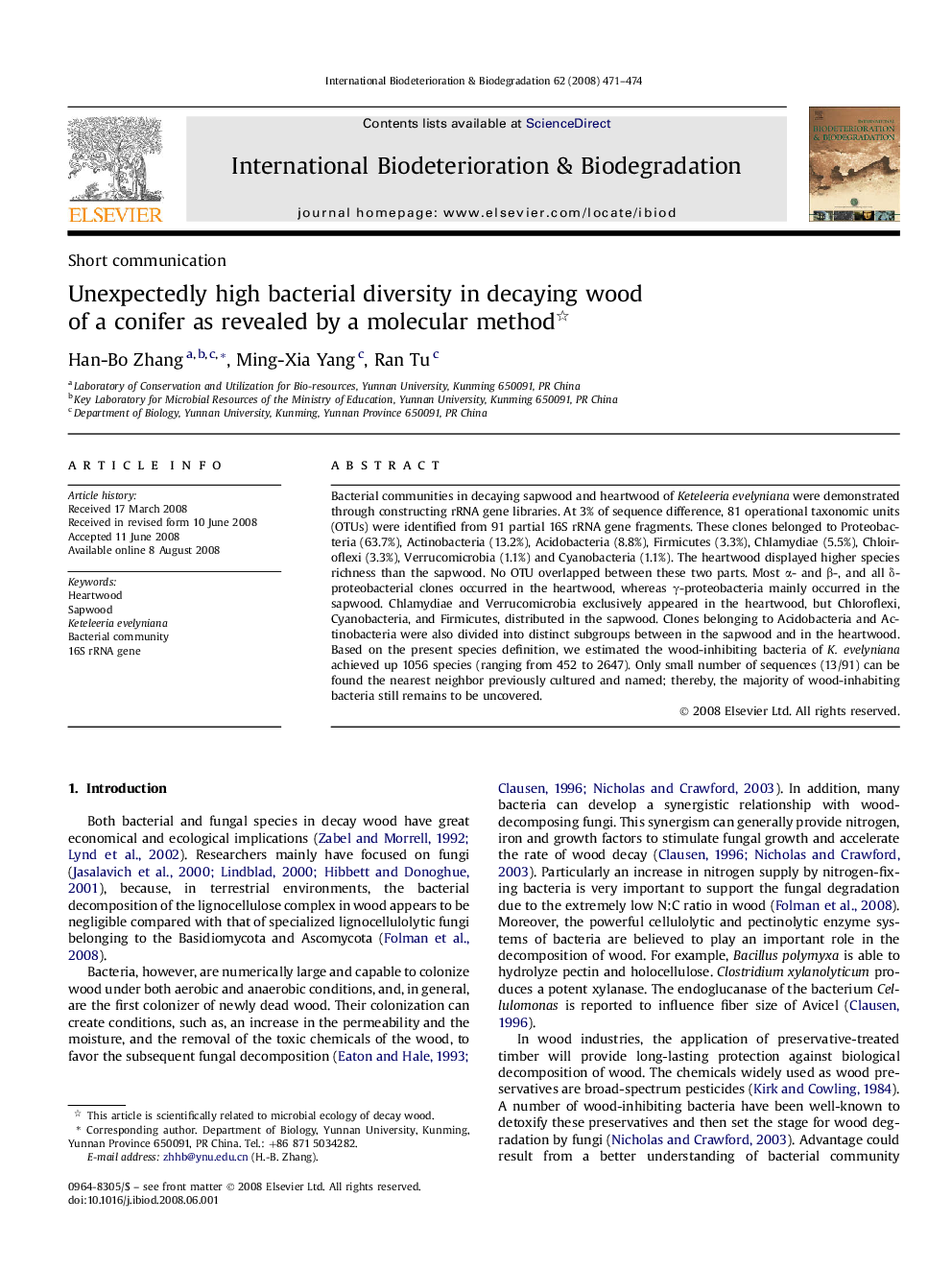| Article ID | Journal | Published Year | Pages | File Type |
|---|---|---|---|---|
| 4365772 | International Biodeterioration & Biodegradation | 2008 | 4 Pages |
Bacterial communities in decaying sapwood and heartwood of Keteleeria evelyniana were demonstrated through constructing rRNA gene libraries. At 3% of sequence difference, 81 operational taxonomic units (OTUs) were identified from 91 partial 16S rRNA gene fragments. These clones belonged to Proteobacteria (63.7%), Actinobacteria (13.2%), Acidobacteria (8.8%), Firmicutes (3.3%), Chlamydiae (5.5%), Chloiroflexi (3.3%), Verrucomicrobia (1.1%) and Cyanobacteria (1.1%). The heartwood displayed higher species richness than the sapwood. No OTU overlapped between these two parts. Most α- and β-, and all δ-proteobacterial clones occurred in the heartwood, whereas γ-proteobacteria mainly occurred in the sapwood. Chlamydiae and Verrucomicrobia exclusively appeared in the heartwood, but Chloroflexi, Cyanobacteria, and Firmicutes, distributed in the sapwood. Clones belonging to Acidobacteria and Actinobacteria were also divided into distinct subgroups between in the sapwood and in the heartwood. Based on the present species definition, we estimated the wood-inhibiting bacteria of K. evelyniana achieved up 1056 species (ranging from 452 to 2647). Only small number of sequences (13/91) can be found the nearest neighbor previously cultured and named; thereby, the majority of wood-inhabiting bacteria still remains to be uncovered.
